
Please note that in order to be considered, any applications for these projects must be submitted through the University's Postgraduate Admissions Web Portal, chosing "DPhil in Condensed Matter". Informal inquiries may be directed by email to Prof. Laura Herz at laura.herz@physics.ox.ac.uk. Some useful information on funding may be found here.
1. Charge generation dynamics in metal halide perovskites for solar cells | |
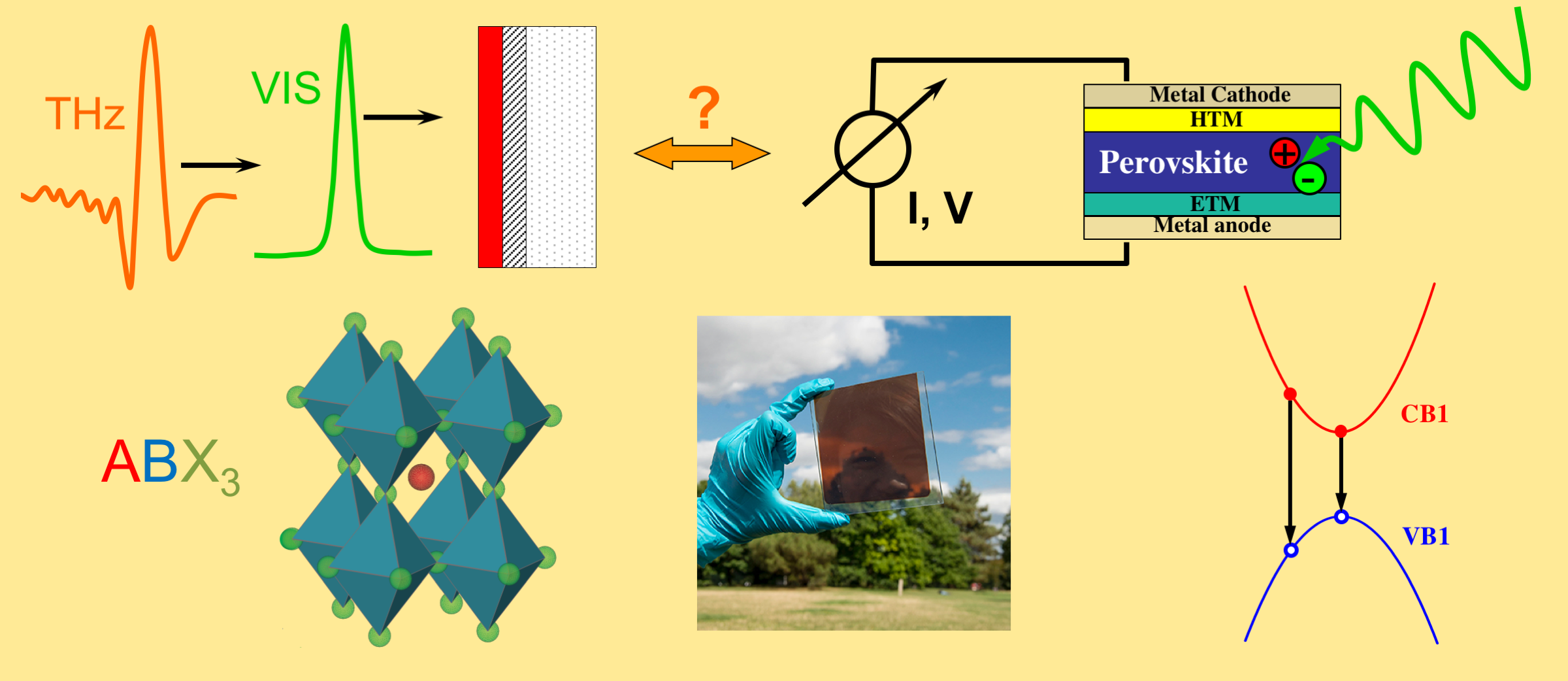
|
Metal halide perovskites have emerged as an extremely promising photovoltaic (PV) technology owing to their rapidly increasing power conversion efficiencies (PCEs) and low processing costs. This research project will examine the fundamental mechanisms that underpin the remarkable performance of these materials to allow for targeted progress. Factors that influence the efficient operation of perovskite solar cells include electron-phonon coupling, charge-carrier mobility and recombination, light emission and re-absorption. During this project we will advance the efficiencies of perovskite solar cells by gaining an understanding of fundamental photon-to-charge conversion processes using a combination of ultra-fast optical techniques, e.g. photoluminescence upconversion and THz pump-probe spectroscopy. These studies feed directly into collaborative efforts aimed at addressing remaining challenges in the creation of commercially available perovskite solar cells, e.g. stability, band-gap tunability, wide-bandgap perovskites, trap-free materials, and morphology control. The project will be part of active collaboration with researchers working on solar cell fabrication within Oxford. |
2. Ultrafast charge-carrier localization in emergent semiconductors for solar light harvesting | |
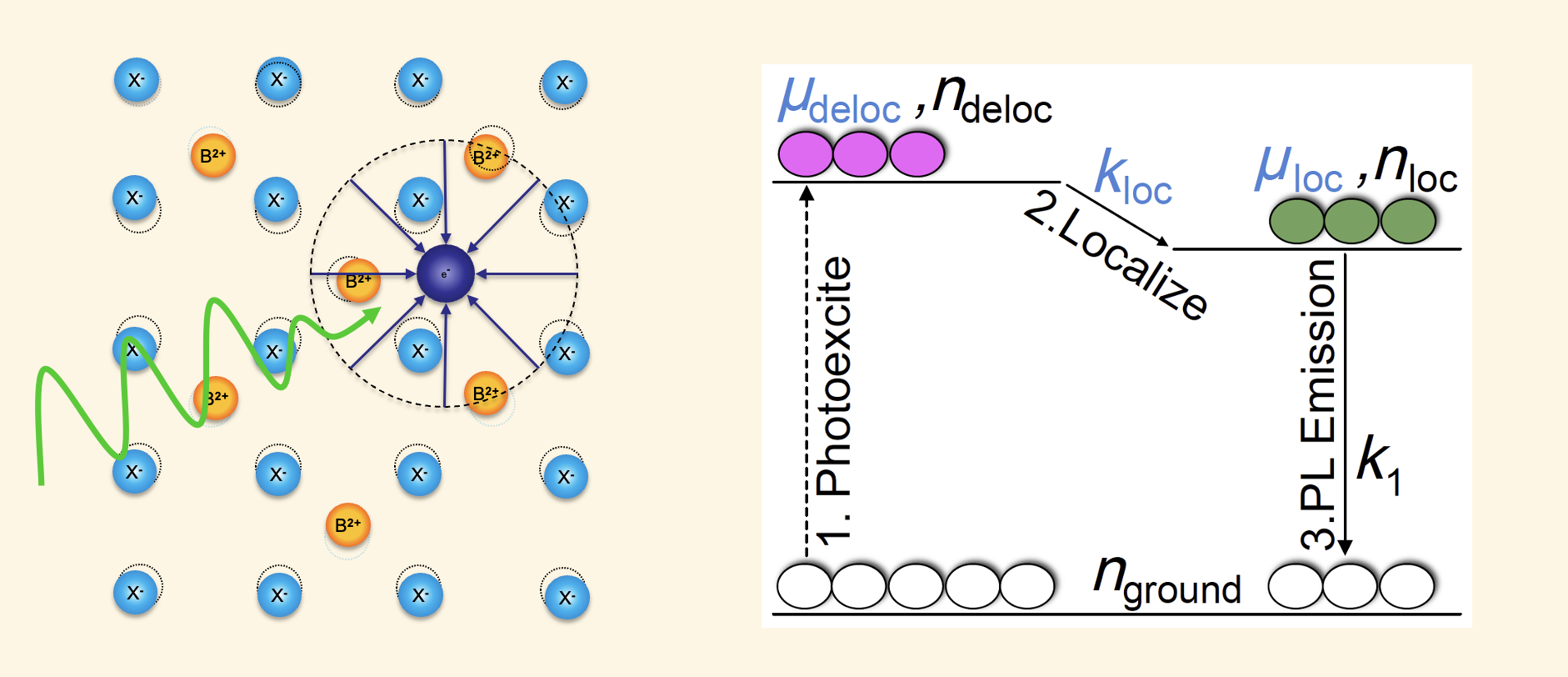
|
The stunning success of lead halide perovskites has inspired the search for further light absorbers with similar performance but lower toxicity and even higher stability. This project will investigate such emerging semiconductors, expanding from an initial selection of semiconducting metal halides, chalcohalides, metal chalcogenides, bisimides, and antimonides. Some of these materials have recently been shown to exhibit an intriguing ultrafast charge-carrier localisation process that lowers charge mobility and whose origins are still poorly understood. This project will have a particular emphasis on unravelling the cause of such sub-picosecond localisation, probing how such charge-lattice interactions are tuned through stoichiometry, electronic and structural dimensionality, lone-pair chemistry, structural flexibility, vibrational and dielectric response, lattice softness and anharmonicity. The project will utilize ultrafast optical conductivity spectroscopic probes conducted across a range of lattice temperatures. |
3. Halide segregation and ionic conduction in soft metal halide semiconductors | |
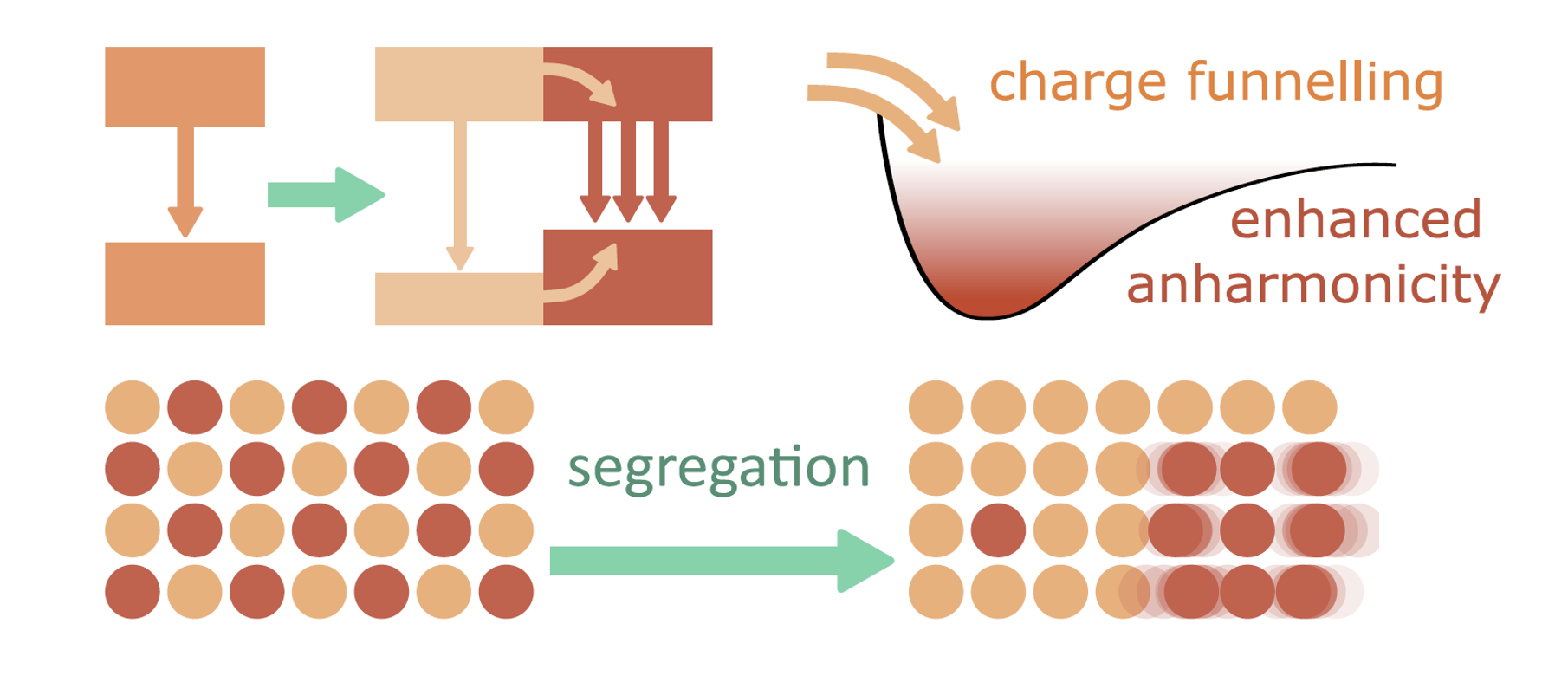
|
The recent success of metal halide perovskites in solar cells is supported by their mechanical softness and structural adaptability that enables thin-film deposition with low embodied energy and low defect densities, self-healing effects and benign interfaces. However, such lattice softness also facilitates migration of ionic species through the solid that causes slow changes in device performance on the timescale of seconds to hours. One of the most detrimental and puzzling effects here is an observed reversible light-induced de-mixing of alloys, which generates local regions of lowered electronic bandgaps where charge carriers become trapped and quickly recombine. Such effects currently presents a severe obstacle to ultra-high-efficiency multi-layered solar cells, which require a range of bandgap energies that are typically created through judicious tuning of alloy fraction. This project will develop a fundamental understanding of how structural properties in these soft alloys are related to their thermodynamic stability and optoelectronic properties. The project will be based around a multi-facetted experimental investigation, involving structural probes e.g. X-ray diffraction, and transient charge-carrier probes using THz conductivity and photoluminescence spectroscopy. This work will ultimately reveal the mechanisms behind light-induced ionic migration and the causes of halide segregation in mixed-halide perovskites in particular. |
4. Advanced device concepts for next-generation photovoltaics | |
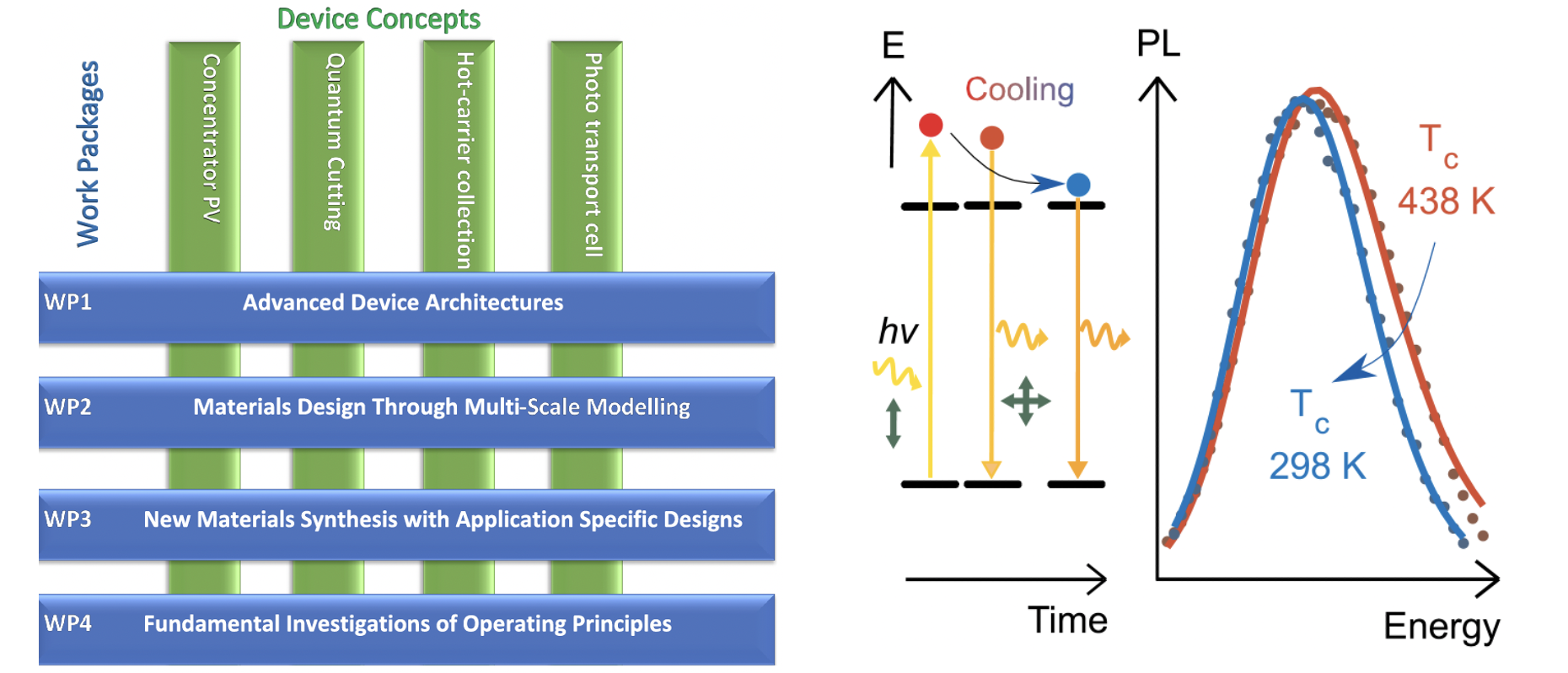
|
This DPhil project will be associated with an exciting new EPSRC/UKRI-funded Programme Grant entitled “Advanced Device Concepts for Next-Generation Photovoltaics.” This collaborative project between Oxford Physics, Materials and Chemistry and Liverpool Chemistry brings together expertise in photovoltaic materials synthesis and device fabrication, advanced characterisation and modelling. The ambition for this project is to carry out multidisciplinary research, via inter-linked work streams, that will explore and conceive four new photovoltaic device concepts and paradigms, enabling the next major step-change in photovoltaic efficiency. New devices architectures, concentrator PV, quantum cutting, hot-carrier collection and photon transport, will be explored and enabled by absorber materials based on metal-halide perovskites, silicon, and novel low-band-gap chalcogenide-halide semiconductors, supported by fundamental experimental characterisation and materials modelling. This studentship will utilize several state-of-the-art spectroscopic techniques, such as transient photoluminescence, absorption and photoconductivity experiments, in order to address the most pressing areas of fundamental understanding which are currently lacking and need to be overcome in order for the four new device concepts detailed above to be realised and optimized. |
5. Transitions from quantum confined to fully delocalized electronic states in semiconductor nanocrystal assemblies | |
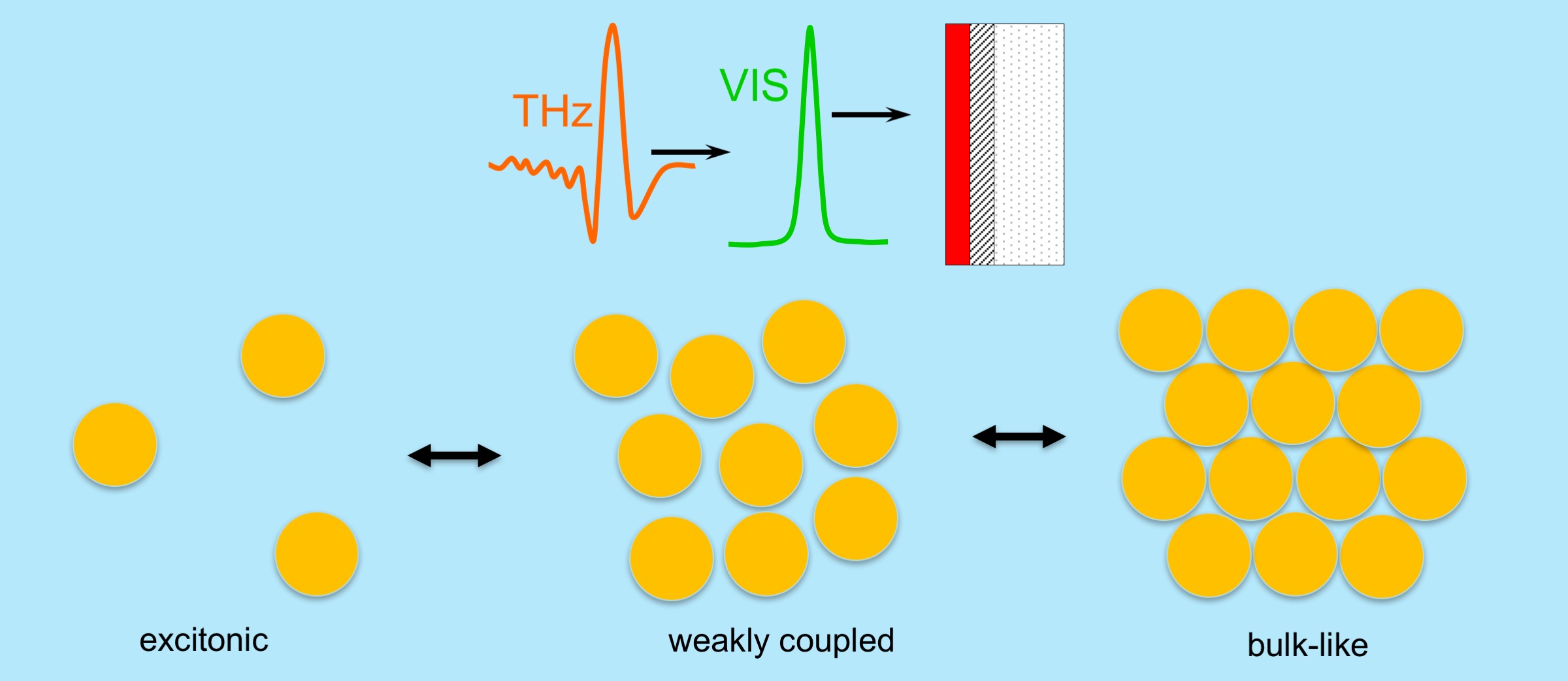
|
The last decade has seen rapid progress in the fabrication and assembly of nanocrystals into thin layers of semiconducting material. Such systems may allow facile deposition of high-quality inorganic semiconductor layers through simple and scalable protocols such as ink-jet printing. However, these procedures raise fundamental questions on the nature of charge transport through such layers. While in sufficiently small nanocrystals, quantum confinement leads to the formation of discrete electronic layers that may exhibit “atom-like”, energetically discrete states, increasing electronic coupling between nanocrystals may induce the formation of mini-bands or bulk-like continuum states. In this project, we will explore such transitions between fundamentally different regimes of electronic coupling and charge transport. We will spectroscopically investigate nanocrystal networks made of established lead chalcogenide inorganic semiconductors, but also explore more recently developed metal halide perovskite colloid materials. These studies will be interesting not only from a fundamental point of view, but also allow for development of such systems in light-emitting, photovoltaics or transistor devices. |
6. Energy and charge transfer in biomimetic light-harvesting assemblies | |
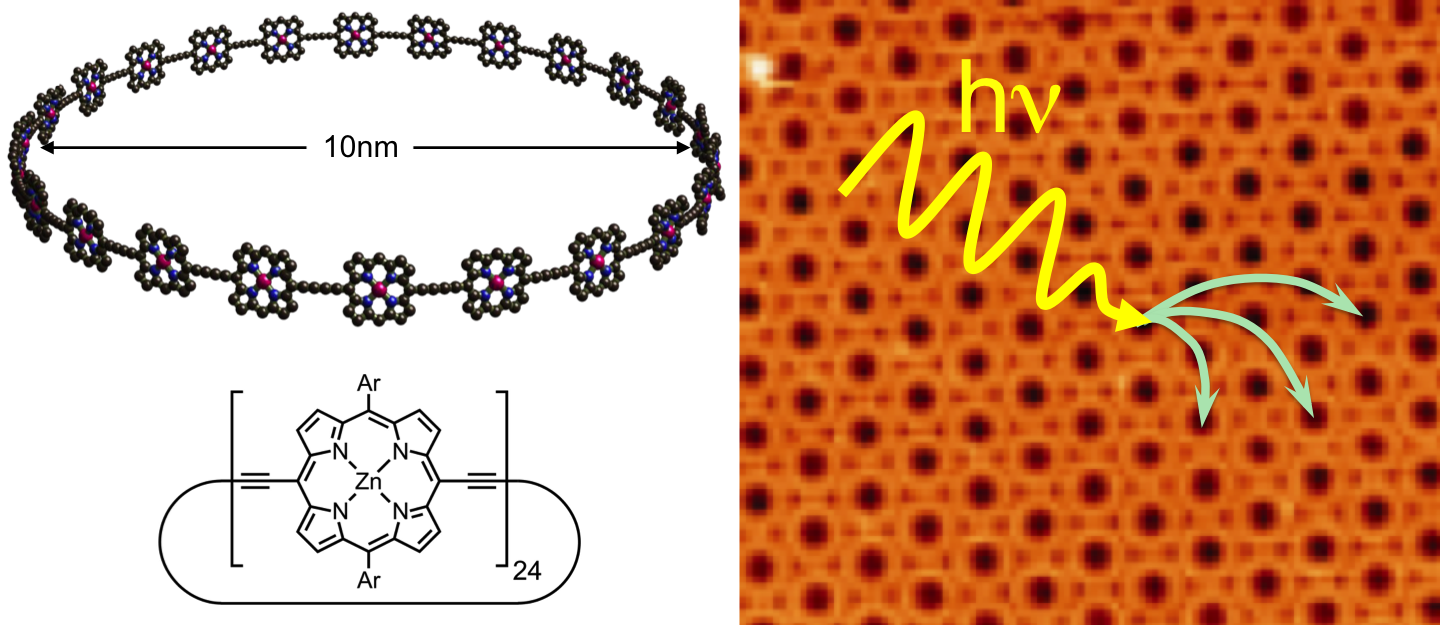
|
Photosynthetic organisms use arrays of chlorophyll molecules to absorb sunlight and to transfer its energy to reaction centers, where it is converted into a charge gradient. These processes are remarkably fast and efficient, because the excited states are coherently delocalized over several chlorophyll units. For natural scientists striving to create new molecular light-harvesting materials for applications such as photovoltaics, the designs nature has invented for us are fantastic templates to learn from. This project will explore energy transfer within and between large porphyrin nanorings that directly mimic natural light-harvesting chlorophyl ring assemblies. By creating interfaces with electron-accepting molecules we aim to create light-harvesting layers that rival their natural counterparts in photon conversion efficiency. This project offers exciting possibilities for work in a new interdisciplinary area of research in collaboration with chemists at the forfront of molecular synthesis. |
|
| |